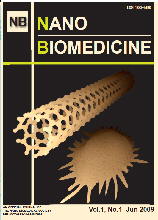Synopsis
The Vitrigel-Eye Irritancy Test (EIT) method is an
in vitro assay that determines the presence or absence of eye irritation potential of chemicals with high sensitivity. The Vitrigel-EIT method with the applicability domain excluding acidic chemicals showing pH ≤ 5 in the test chemical preparation and all solids was registered as the OECD test guideline No.494 in 2019. In this study, we aimed to revise the test method as it is available for not only liquids but also solids by performing a pretest to exclude the test chemical preparations showing pH ≤ 5 and/or rapid phase-separation within 3 min of testing time. We examined total 158 chemicals (94 liquids, 64 solids), and consequently 51 test chemical preparations (12 showing pH≤5, 39 showing rapid phase-separation) were excluded in the pretest. The sensitivity, specificity and accuracy for the 107 applicable test chemicals were 96% (51/53), 67% (36/54) and 81% (87/107), respectively. Meanwhile, the number of chemicals applicable to the Vitrigel-EIT method with the applicability domain in the above TG494 was 89 out of 158, and the sensitivity, specificity and accuracy of the 89 applicable test chemicals were 95% (38/40), 67% (33/49) and 80% (71/89), respectively. These data demonstrated that not only the number of applicable chemicals but also the predictability was improved by the revised Vitrigel-EIT method with the pretest.
Key words: collagen vitrigel membrane, corneal epithelium, eye irritation test, HCE-T cells, transepithelial electrical resistance
Full text PDF
DOI: 10.11344/nano.16.89
Yamaguchi H, Kojima H, Takezawa T. Vitrigel-eye irritancy test (EIT) method revised for including not only liquid but also solid test chemicals. Nano Biomed 2024; 16(2): 89-101.
